Leer en Español
By Anne Bloomfield, Applied Farmscape Ecology Manager
Farms provide vital habitat for both common and declining species of birds. If you are a farmer, you likely have many important things you should be thinking about like tending to your onions, crop planning or ordering irrigation supplies. This article is not a long and involved manuscript. In this article, I will share simple, straightforward steps to provide habitat for and support cavity nesters on farms. You will learn how to identify cavity nesters, what habitat they need and actions you can take to help. Also included are resources to help you get started on your journey with cavity nesting birds.
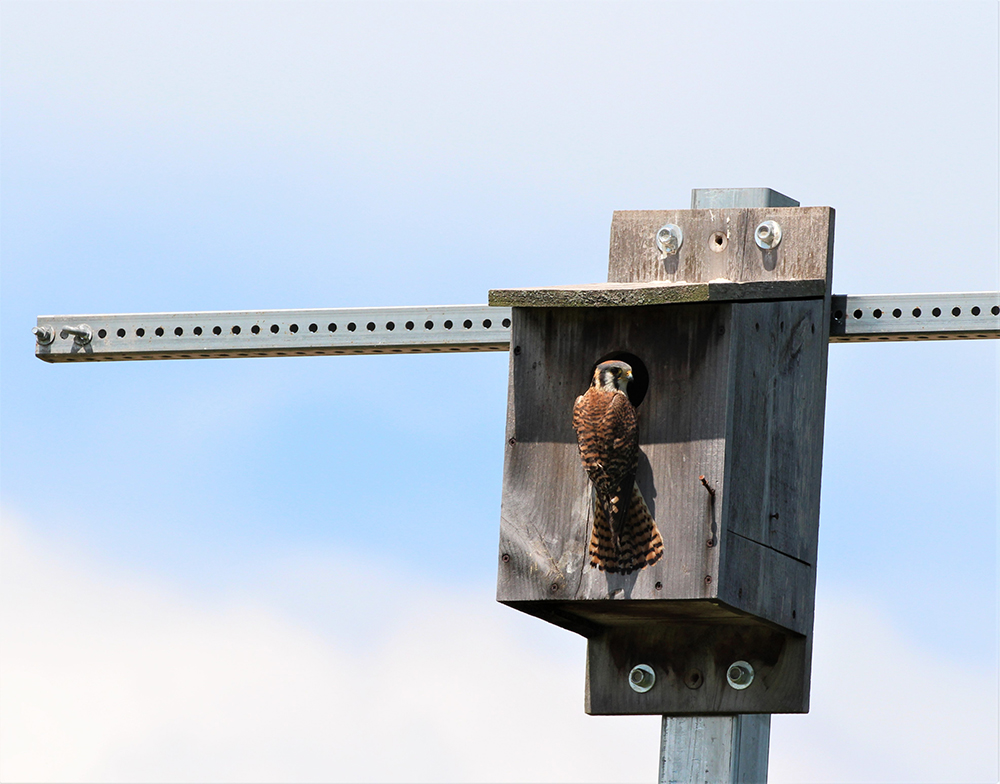
What is a cavity-nesting bird?
A cavity-nesting bird is a bird that nests in a cavity. All jokes aside, the cavity part is quite critical to their existence. Cavity-nesting birds require a sheltered opening to raise their young. Either a tree cavity in a living or dead tree or even a crack or crevice in a building. Some cavity-nesting birds are very specific about the size and type of cavity they will use and the habitat it is located in. Other species of cavity-nesting birds will use just about any sheltered opening to put their nest in. Carolina Wrens, for example, are known to put their nests in anything from flowerpots to bags hanging in a shed. Our most notorious cavity nesters include the woodpeckers, which are skilled at excavating their own nesting cavities. While several cavity-nesting birds are found on farms, two species that we will focus on are Eastern Bluebirds and American Kestrels. Both species use natural tree cavities. I will outline how we can mimic their preferred tree cavities with nest boxes, and other steps you can take to support them on farms.
Why should we help?
Though previously abundant in part due to land clearing for farmland in the 19th century, Eastern Bluebirds experienced sharp declines in the 20th century, but have made a steady recovery. Factors that potentially played a role in their decline include primarily extreme weather events, but also pesticides, lack of nest cavities, and competition with non-native birds for nest sites. In the last 50-60 years, establishment of bluebird nest boxes designed to exclude non-native birds helped alleviate competition for nest sites. In addition, populations have recovered from the extreme weather events of the late 1970s. American Kestrels are currently declining in New York and New England. Factors such as habitat loss, lack of nesting cavities and pesticide use may be contributing, though much remains unknown concerning the exact cause of American Kestrel Decline in our area. Managing your farm with these two species in mind will help keep common birds common as well as support birds currently in decline.
How to Identify Cavity-nesting birds on your farm and where to find them
There are a number of field guides, apps and online identification tools available. You can learn more about identifying American Kestrels here and Eastern Bluebirds here. Bluebirds and kestrels both prefer open habitats such as old fields, crop fields, pastures, orchards, forest openings and golf courses. Even if the habitat is correct, a lack of nesting cavities will discourage them from staying to breed. Leaving dead trees standing and installing nest boxes are great ways to provide cavities. Most open habitats are suitable. Kestrels and bluebirds both like perches, this could mean anything from a wooden stake to a parked tractor or a woody shrub in a field. American Kestrels eat mainly insects and rodents while bluebirds eat insects, spiders and fruit.
In mild winters, these two species can be seen year-round on farms in our area. Spring migration is a great time to look for them as they pass through farms in higher numbers. Look for them starting in February or March. It is critical to observe if you continue to see these species later in the spring and into the summer, which suggests they could be nesting.
- Each time you observe a bluebird or a kestrel, make a quick mental note or even write it down. This will help you determine if you have these two species and when and where you see them.
- Keep an eye out for any bird seen hovering in place over fields (a common behavior of a foraging kestrel).
- Scanning woodland and field edges for the bright blue of bluebirds can also be useful, even in winter.
- A pair of binoculars and a field guide are helpful and recommended but are not essential.
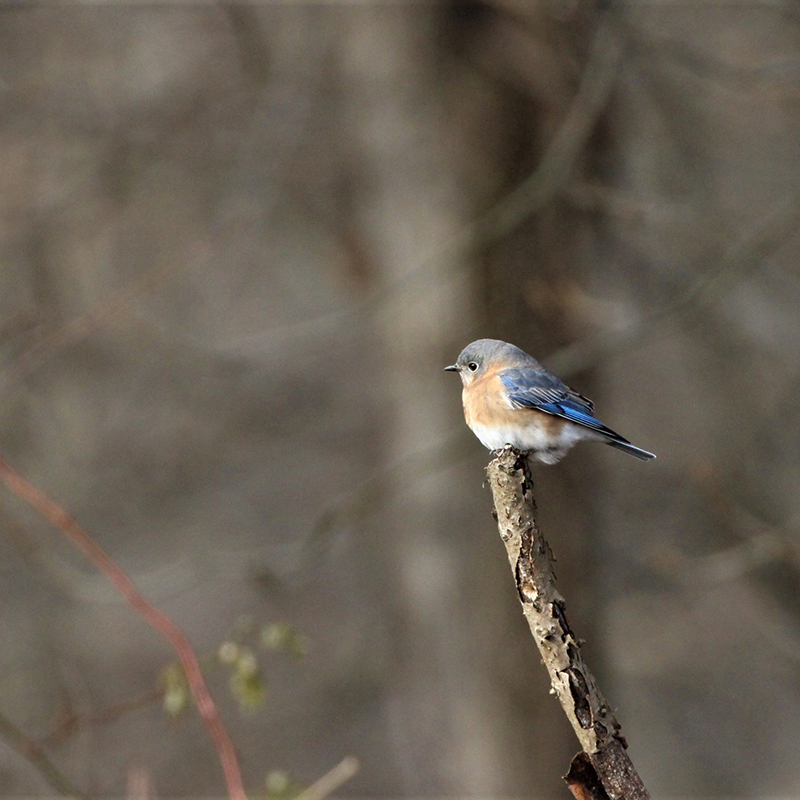
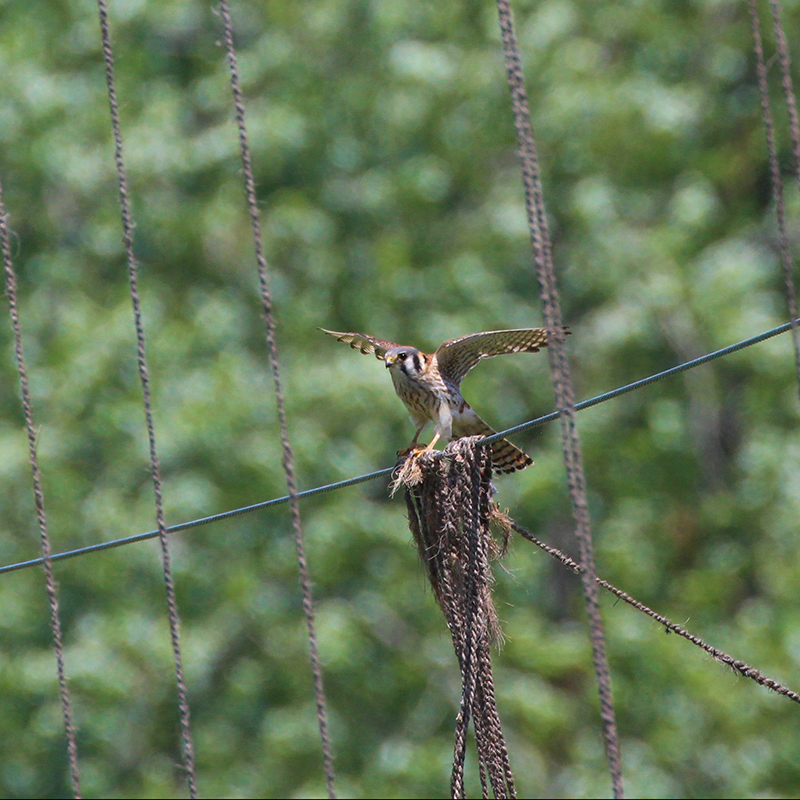
How can you help?
Below is my quick list to get you started on your journey:
- No rodenticides. Focus on use of snap traps. Rodenticides can kill raptors like kestrels
- Leave dead trees (snags) standing when possible. This provides nesting cavities
- Install and maintain species-specific nest boxes especially if you lack natural tree cavities
- Make observations on where and when you observe cavity nesters on your farm
- Plant and/or encourage fruit-bearing plants, trees and shrubs such as staghorn sumac
- Use Integrated Pest Management (IPM) methods for pest control decisions
Many of these practices we implement at the Farm Hub. Some practices, such as siting, installing and maintaining nest boxes or eliminating use of rodenticides, took more time and discussion. While other things like simply observing where and when we saw bluebirds and kestrels we began right away. Pick one or two things from the list to work towards.
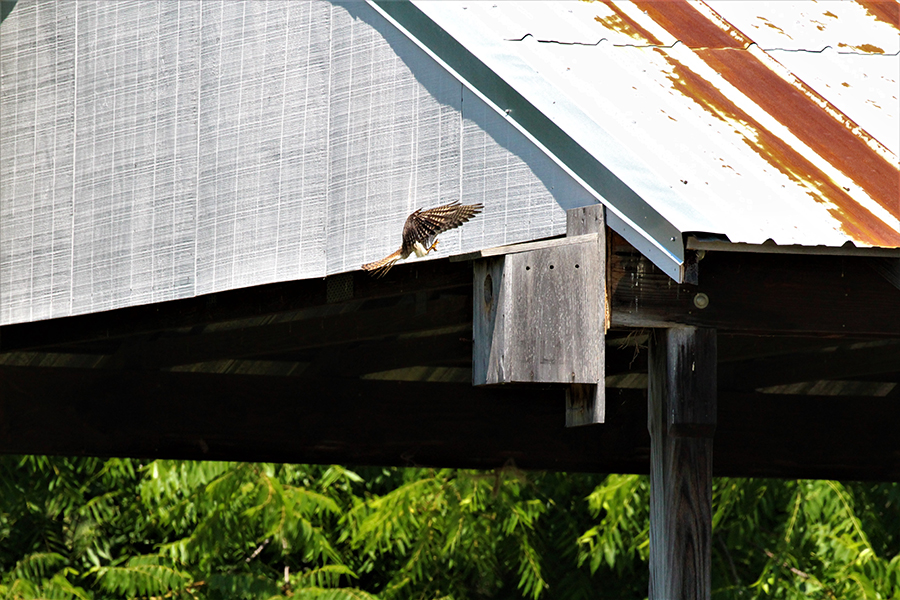
The Right Nest Box in the Right Place for the Right Bird
A key component of having success with cavity nesters is successful siting and construction of nest boxes particularly if the area lacks natural cavities. Different types of birds need different types of nest boxes. Moreover, the right nest box in the wrong location will not be successful. The wrong entry hole size could deter the species you are trying to help, or invite in other species that will displace your target bird. Finally, if you put your box out at the wrong time your chances of success go down for that year if you create disturbance in the area. To be successful you need to have all of these nest box ingredients.
- Size and height Use a nest box building plan from a reputable source to make sure the dimensions of the box and hole are correct for your target species (see resources below)
- Location place kestrel and bluebird boxes in open areas, avoid high traffic areas and grain sources to prevent disturbance and competition with introduced birds
- Timing Put boxes out before February before birds return to our area and begin looking for nest sites or alternatively install them in late summer post-breeding season
- Maintenance At a minimum check annually that boxes are sound and usable. If any dead birds, mouse nests etc. are inside remove. If intact successful nest remains use discretion when deciding to leave or remove. There is evidence that some bluebirds prefer a used nest box with an old nest.
- Observe nest boxes in spring and summer for use
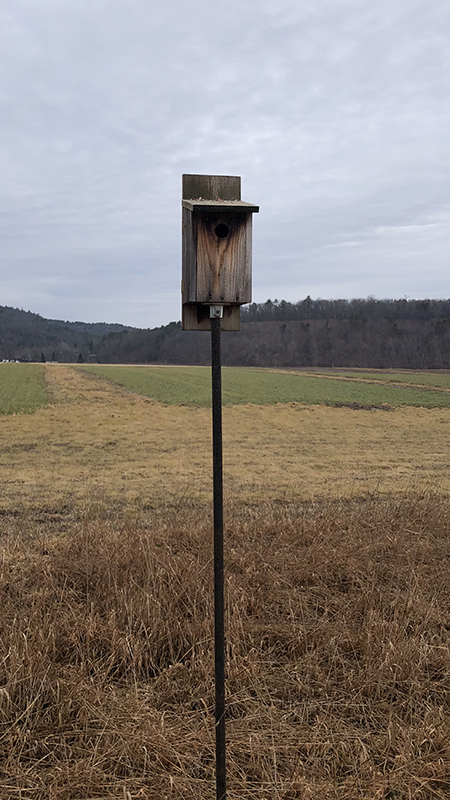
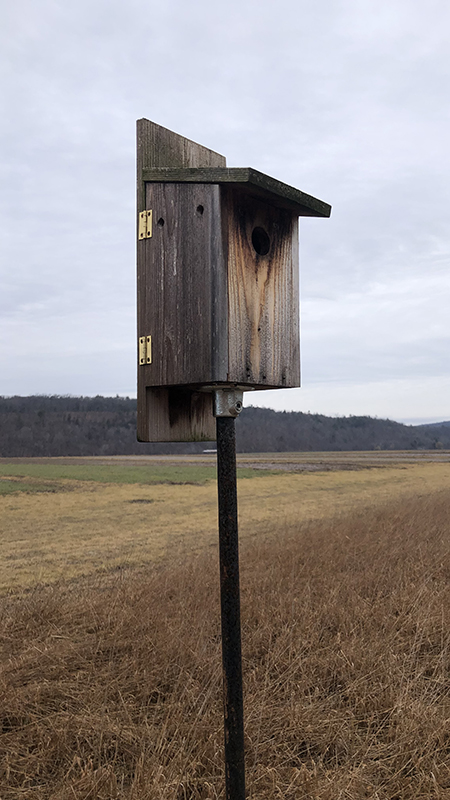
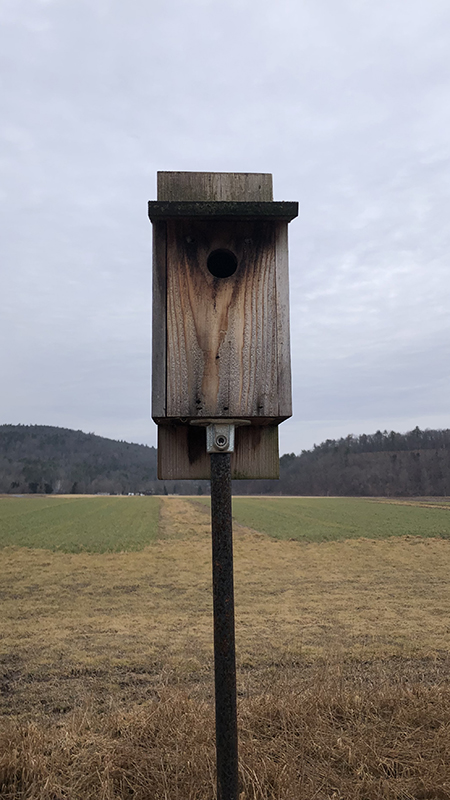

Luckily, there are many resources available today to help make planning easy should you need more information. You can find plans for Eastern Bluebird nest boxes here and American Kestrel box plans here. Or you can even buy premade nest boxes that list the species. If you include these ingredients and follow my recipe above, you will be observing cavity-nesting birds in no time. Have a question about managing your farm with cavity-nesting birds in mind? You can email me at [email protected] or call at 845-331-1187 ext. 112.
